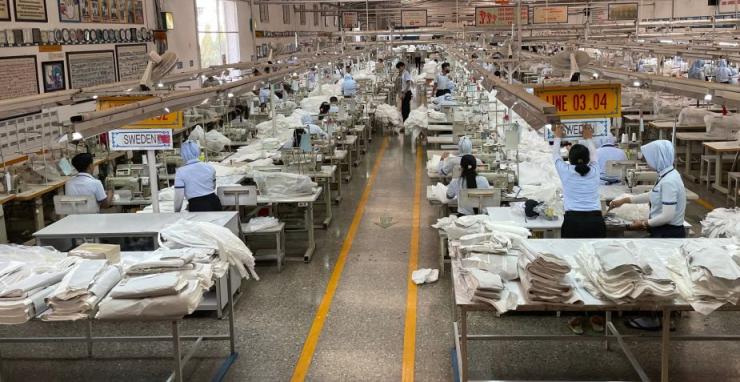

EnaTex: Completion of the project
The textile industry contributes up to 10 percent of global CO2 emissions. During the four-year project period, the EnaTex project developed ways to make the textile industry in Indonesia more climate-friendly. The focus was on the wet and dry finishing of textiles. This process, which includes pre-treatment, dyeing and finishing, has the highest energy consumption along the production chain.
Through research and innovation, energy savings of over 40 percent have been achieved through measures in the provision and use of energy. On the textile machine side, the focus was on the so-called minimum application process and the ultrasonic process. The minimum application process uses minimal amounts of chemicals for textiles, which significantly reduces the energy consumption of the drying process. The ultrasonic process allows fabrics to be cleaned and dyed more efficiently, saving water and energy and reducing brown coal consumption.
In the area of energy supply, up to 20 percent could be saved by optimising the generation of steam and high-temperature thermal oils. In particular, the digitalisation and automation of existing combustion technology were identified as measures. Further work investigated the substitution of fossil fuels with wind, solar and residual biomass. Concepts were developed and presented at the final conference.
How these results can be transferred into practice was the topic of the final event. The two corporate partners of the EnaTex project (SriTex from Surakarta and Harapan Kurnia from Bandung) are already successfully incorporating some of the approaches, for example by implementing occupational safety measures, innovative dyeing materials and optimised operating methods.
To mark the end of the project, the comprehensive innovation approach of the project is highlighted in detail in the current FONA newsletter. You can find the article here (in German).
For more information on the project, please visit the project website.
